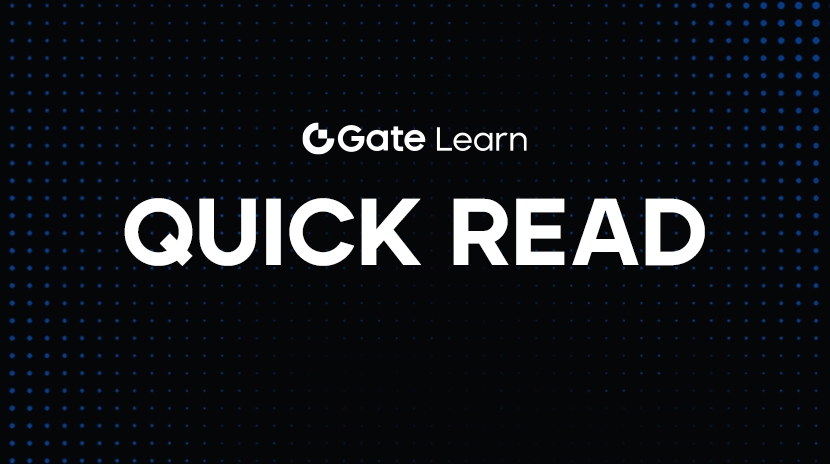What is Saga? A deep dive into the modular chain revolution behind saga crypto
What is Saga?

Image:https://x.com/Sagaxyz__
Saga is a modular blockchain protocol focused on ‘automated deployment of application chains’. Its core idea is to enable developers to deploy their own high-performance exclusive chain (Chainlet) without the need to deeply understand the underlying technology of blockchain, just like deploying an App on AWS, and achieve the ‘Web3 cloud service platform’ in the blockchain world with one click.
Unlike traditional smart contract platforms, Saga splits each DApp into an independent chain, significantly improving performance, customizability, and security.
Chainlet Model: Modular Web3 New Paradigm

Image:https://docs.saga.xyz/introduction/saga-overview/saga-chainlets
Chainlet is a key component in the Saga protocol, essentially an independent application chain with the following characteristics:
- Exclusive performance: Does not share block space with other applications, avoiding congestion;
- Highly customizable: supports multiple virtual machines (EVM, CosmWasm, SolanaVM, etc);
- On-demand expansion: developers can deploy multiple Chainlets according to the load to achieve horizontal scalability;
- Developer-friendly: automate deployment process, as simple as deploying smart contracts.
Chainlet aims to provide ‘infinitely scalable blockchain service units,’ hiding the complexity of Web3 in the underlying infrastructure.
Pegasus Upgrade: Towards Decentralization and Shared Security

Image:https://docs.saga.xyz/
The Pegasus upgrade released in 2024 is a key development for Saga, mainly including the following three points:
- Introducing the $SAGA staking mechanism: strengthening the security of the mainnet through the PoS model;
- Shared Security (CCV) Mechanism Online: Chainlet does not need to recruit validators separately, directly inherits the security of the main chain;
- Decentralization of Validators: External validators join the operation of platform chains and Chainlets to enhance network resilience.
In addition, Saga adopts a phased online strategy to gradually achieve a decentralized, secure and upgradable Chainlet network structure. Developers can deploy applications starting from the first phase, and subsequent network upgrades will be automatically synchronized without affecting business operations.
Token Economics and Market Performance of Saga
Token Distribution
Ecosystem and Development: 30%
Investors: 20%
Core Contributors: 20%
Airdrops: 15.5%
Foundation Reserve: 10%
Binance Launchpool: 4.5%

Image:https://www.coincarp.com/currencies/saga-xyz/project-info/
Saga uses $SAGA as the core token of the protocol, assuming the following roles:
1. Security guarantee and staking rewards
- Users can participate in the mainnet security maintenance and receive block rewards by staking $SAGA;
- Validators who violate the service level agreement (SLA) will be penalized with ‘slashing’ deduction of staking.
2. Chainlet chain fee payment mechanism
Saga introduces the ‘Musical Chairs’ auction mechanism to set the fee price for each epoch round:
- Validators quote for participation in chain fee bidding in each epoch
- The validators with the lowest bid are selected to form the Active Set;
- Chain fees are paid to the Active Set, reducing developer costs;
- The mechanism encourages price competition and drives down chain fees.
In addition, Chainlet chain fees can be indirectly paid by developers in stablecoins, platform tokens, etc., and finally automatically converted to $SAGA for payment to the network.
3. Market Circulation and Performance

Image:https://www.gate.io/trade/SAGA_USDT
On May 9, 2025, the price of $SAGA is around 0.32 US dollars, with a recent significant increase. Please invest cautiously and be aware of the risk of a pullback.
Its strong technical narrative (modular blockchain + automated deployment + Cosmos ecosystem) has attracted attention from institutional and community investors. The token distribution is reasonable, with clear lock-up and unlock schedules for the team and foundation, which helps stabilize price performance.
The Potential and Ecological Prospects of Saga
Saga is at the technological intersection of modular blockchain and multi-chain collaboration:
- Cutting-edge technology: based on Cosmos-SDK, inheriting the interoperability advantages of IBC;
- Low development threshold: deploying a chain is similar to smart contracts;
- Strong scalability: support for heterogeneous VMs and custom chain logic;
- Open ecosystem: collaborating with mainstream chains such as Ethereum, Polygon, Celestia, etc.
With the emergence of new tracks such as AI, DePIN, and Agent, Saga’s Chainlet architecture will become an ideal landing platform for many high-performance DApps.
Summary: Why pay attention to Saga Crypto?
Saga crypto is redefining the way ‘application deployment’ is done, with its modular, decentralized, and secure sharing technology architecture, which is expected to solve the scalability bottleneck of existing blockchain platforms. Whether you are a developer, investor, or someone interested in the Web3 users of the next generation blockchain infrastructure, Saga is a promising new project worth keeping an eye on.
Related Articles

Pi Coin Transaction Guide: How to Transfer to Gate.io

What is N2: An AI-Driven Layer 2 Solution

Grok AI, GrokCoin & Grok: the Hype and Reality

How to Sell Pi Coin: A Beginner's Guide

Crypto Trends in 2025
